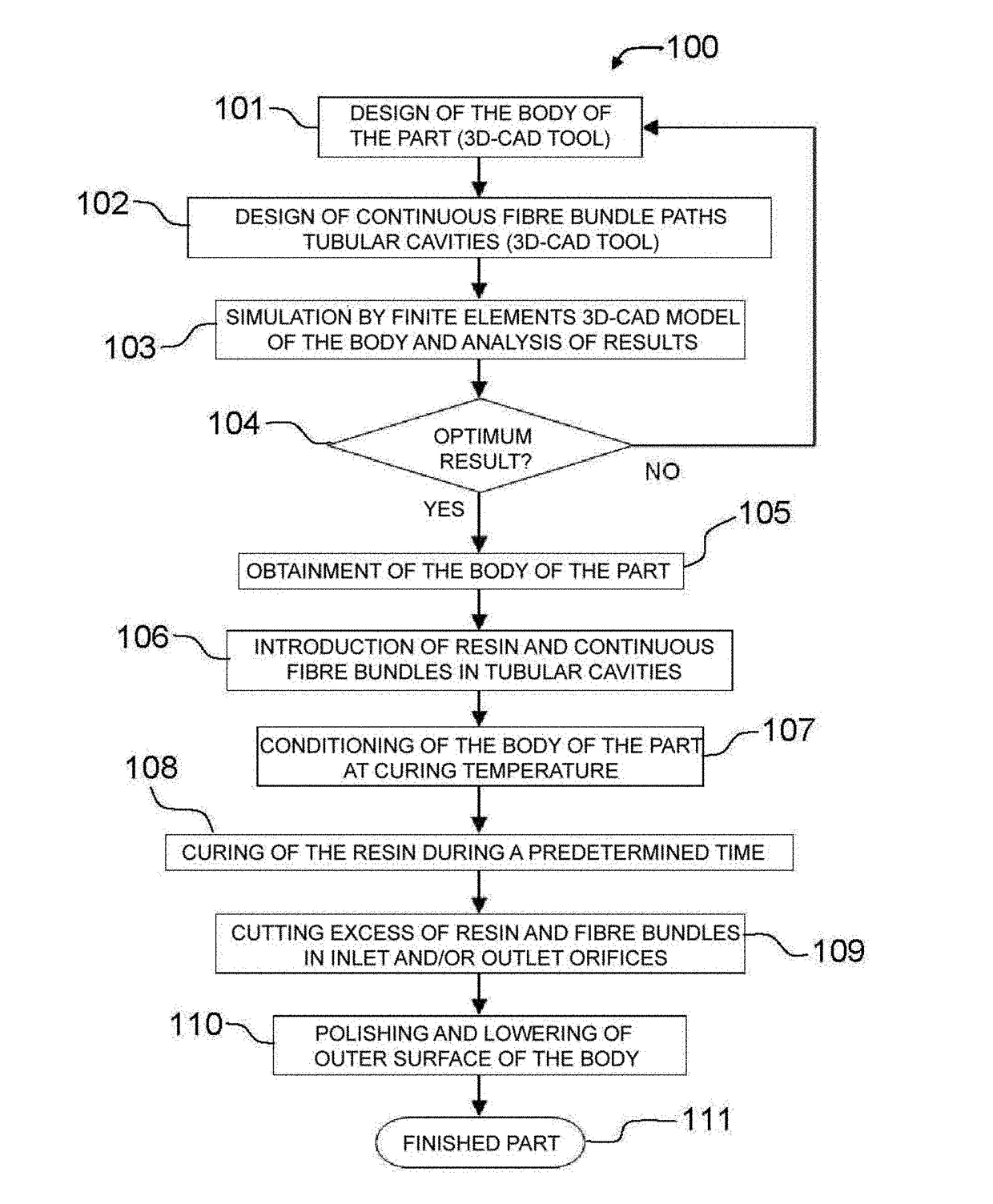Procedure and system for manufacturing a part made from composite material and part made from composite material obtained by means of said method
a technology of composite materials and manufacturing methods, applied in the direction of additive manufacturing, manufacturing tools, coatings, etc., can solve the problems of increasing the cost of the manufacturing method, slowing down the manufacturing method, and imposing serious limitations on the geometries of the parts obtained
- Summary
- Abstract
- Description
- Claims
- Application Information
AI Technical Summary
Benefits of technology
Problems solved by technology
Method used
Image
Examples
example 1
[0146]FIGS. 6a-c show, respectively, a profile and front perspective view of an example of a part made from composite material manufactured using the method of the present invention. Specifically, the part 600 comprises a body 601 having four support zones 602a-d on its lower part and a load zone 603 on its upper part. The part 600 has been designed to support a force exerted on the load zone 603 and aimed vertically towards the plane whereon the four support zones 602a-d rest. In particular, the dimensions of the part 600 are 175 mm×80 mm×65 mm.
[0147]The shape of the body 601 has been calculated using topology optimisation tools based on the finite element method to automatically optimise the geometry of the body 601, removing material from those zones subject to less mechanical stress. Upon optimising the geometry of the body 601, the path of the continuous fibre bundles has been determined (and, correspondingly, of the tubular cavities that will house them) through the interior o...
example 2
[0162]FIG. 8 shows a second example of a part made from composite material whose body has been obtained by joining a plurality of elements. In particular, the body 800 of the part comprises a plurality of elements 801-810, each element having at least one tubular cavity segment in its interior. FIG. 8 shows a cross-section of the body 800 in order to be able to observe the tubular cavity segments disposed in elements 801-810.
[0163]As can be observed in the figure, not all the elements 801-810 have the same shape and / or dimensions. Therefore, while the elements 801-805 are substantially cylindrical and elongated, the elements 806-810 are substantially spherical or ellipsoidal and act as joining elements of the former. Also, each of the elements 806 and 809 contain two independent tubular cavity segments in their interior, while each of the elements 801-805, 807, 808 and 810 include only one in their interior.
[0164]In accordance with the method of the present invention, the elements 8...
PUM
| Property | Measurement | Unit |
|---|---|---|
| lengths | aaaaa | aaaaa |
| lengths | aaaaa | aaaaa |
| lengths | aaaaa | aaaaa |
Abstract
Description
Claims
Application Information
 Login to View More
Login to View More - R&D
- Intellectual Property
- Life Sciences
- Materials
- Tech Scout
- Unparalleled Data Quality
- Higher Quality Content
- 60% Fewer Hallucinations
Browse by: Latest US Patents, China's latest patents, Technical Efficacy Thesaurus, Application Domain, Technology Topic, Popular Technical Reports.
© 2025 PatSnap. All rights reserved.Legal|Privacy policy|Modern Slavery Act Transparency Statement|Sitemap|About US| Contact US: help@patsnap.com



